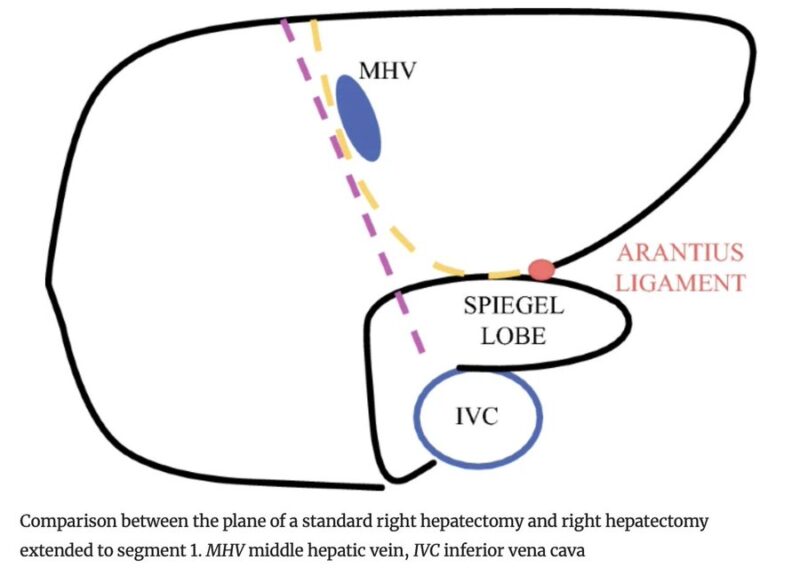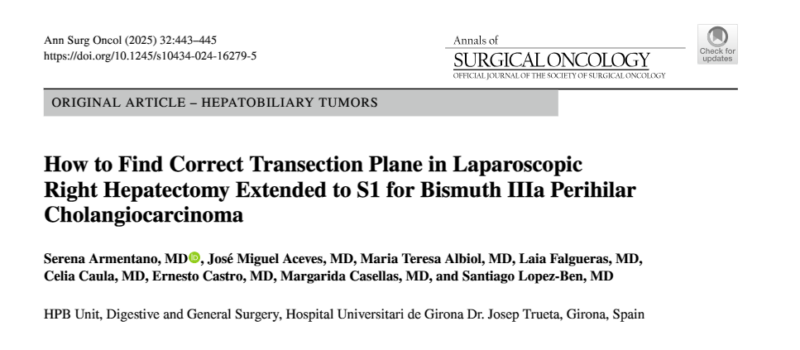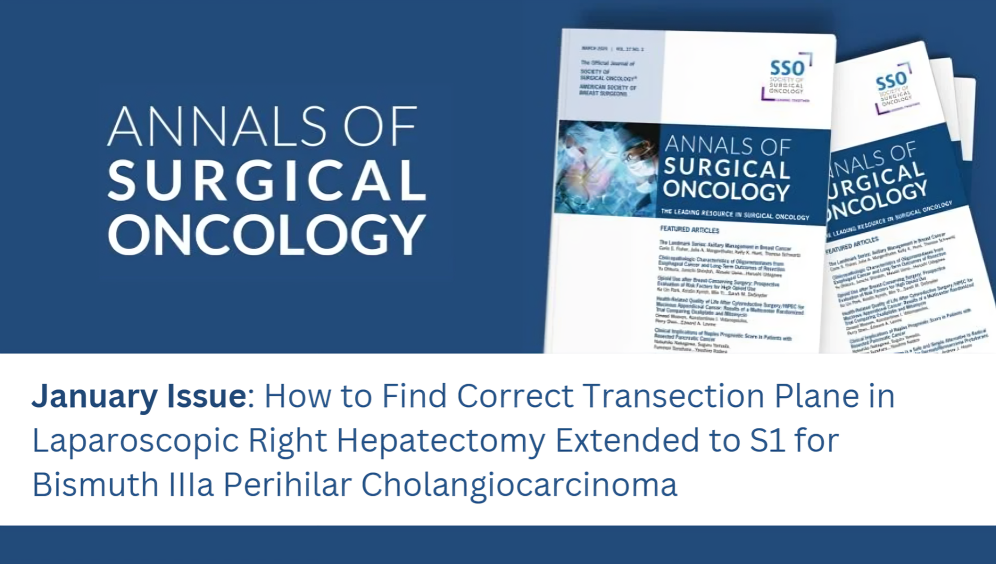Annals of Surgical Oncology, shared a post on X:
“January Issue: How to Find Correct Transection Plane in Laparoscopic Right Hepatectomy Extended to S1 for Bismuth IIIa Perihilar Cholangiocarcinoma”

Authors: Serena Armentano et al.

Perihilar cholangiocarcinoma (pCCA) presents a significant surgical challenge, often requiring an extended hepatectomy that includes segment 1 and the biliary tract to achieve oncologic clearance. With advancements in minimally invasive techniques, an increasing number of centers have adopted robotic or laparoscopic approaches, demonstrating comparable oncologic outcomes while maintaining acceptable morbidity and mortality rates.
The January issue of Annals of Surgical Oncology presents the case of a 79-year-old male with Bismuth type IIIa perihilar cholangiocarcinoma (pCCA) who underwent a minimally invasive right hepatectomy extended to segment 1 and the biliary tract. Preoperative optimization included biliary drainage, as well as portal vein and right hepatic vein embolization. Unlike standard right hepatectomy, resection in such cases requires precise identification of the plane defined by the Arantius duct.
To facilitate this dissection, researchers employed a combination of three previously established techniques: dorsal and caudal approaches to the middle hepatic vein (MHV) and an extraglissonian intrahepatic approach to the left portal pedicle. These methods enabled precise transection and an oncologically radical resection.
The case highlights the feasibility of achieving R0 resection in pCCA using minimally invasive techniques, reinforcing their potential role in complex hepatobiliary surgery. As experience with robotic and laparoscopic approaches continues to grow, such strategies may become an increasingly viable alternative to traditional open surgery.
